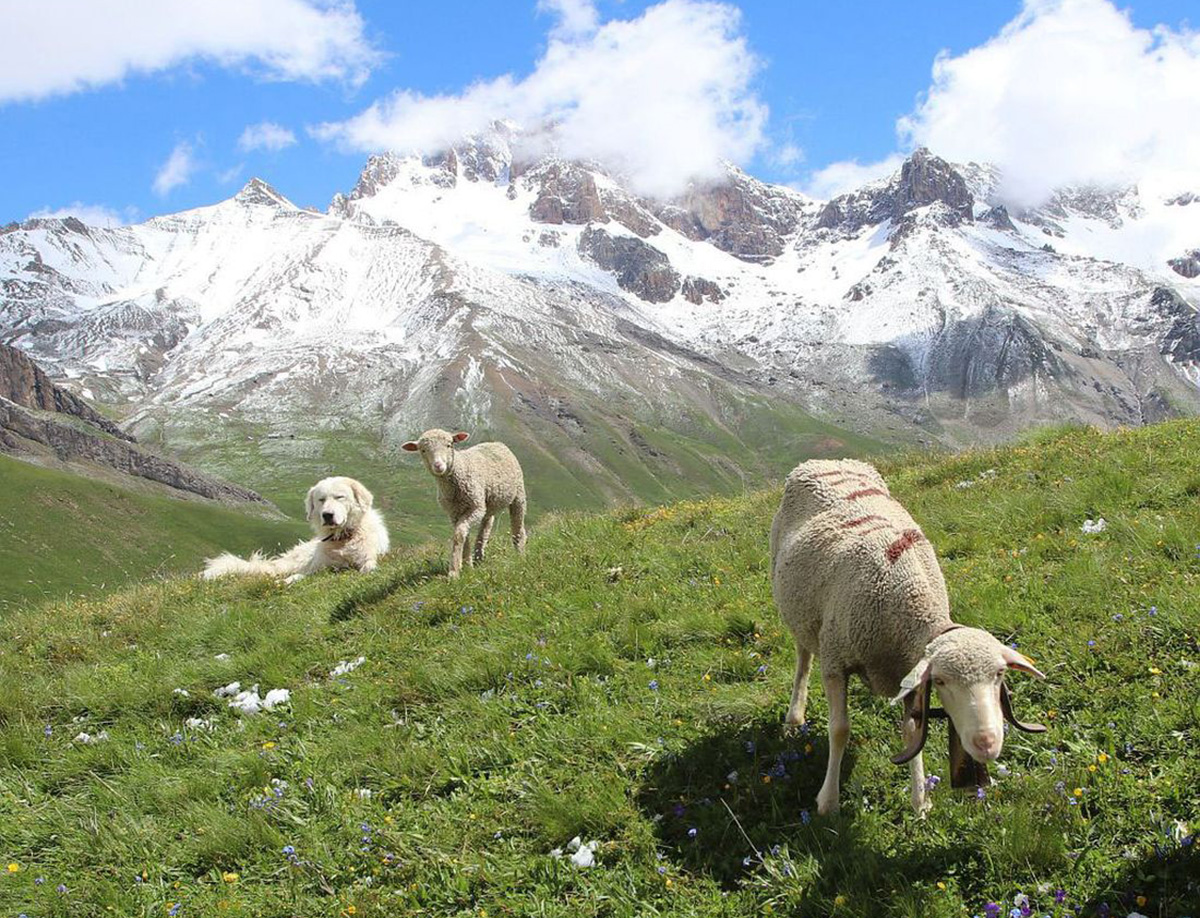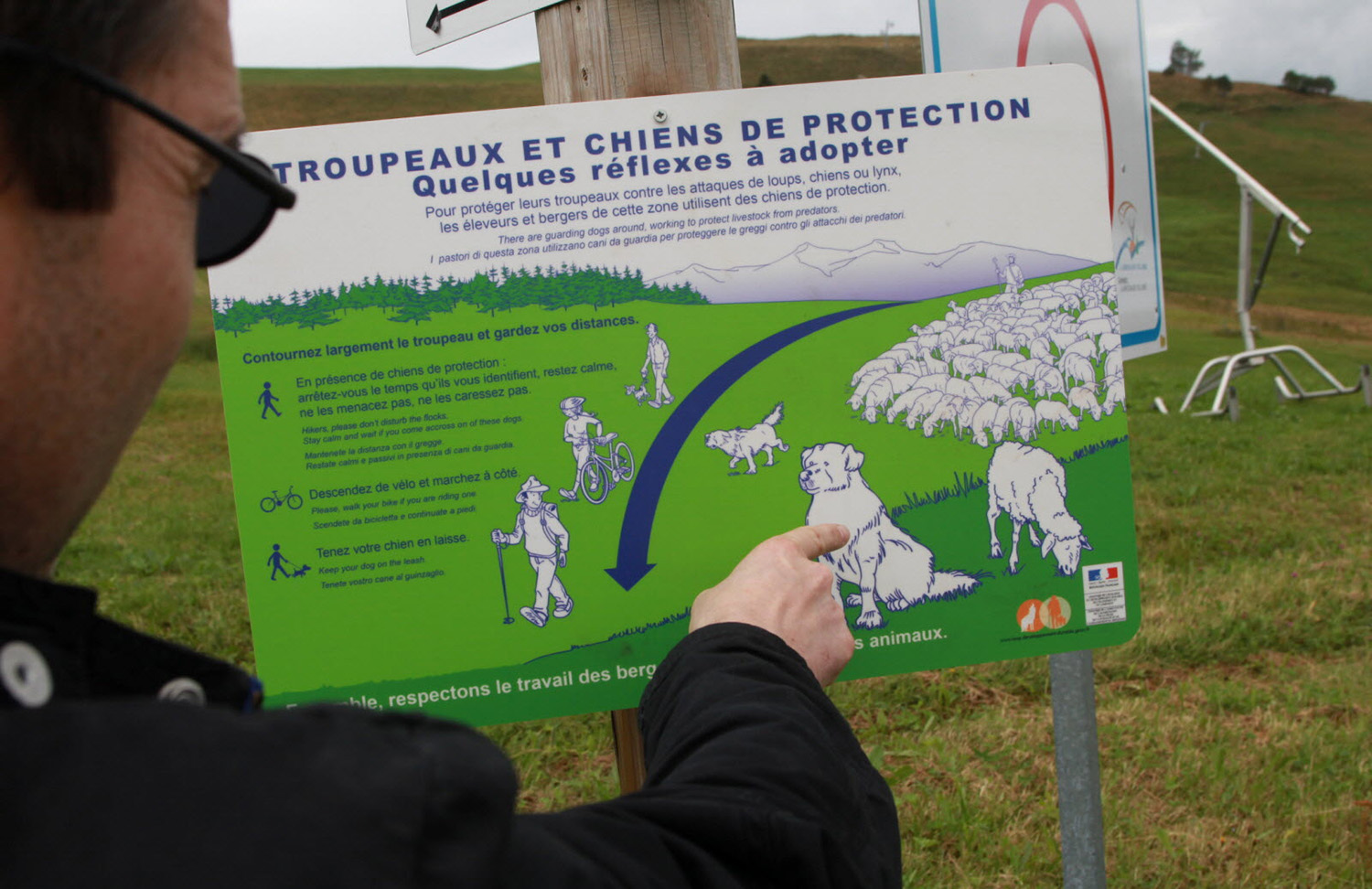Troupeaux de moutons et patous
Presentation
Learn more about guard dogs
What is their role and expected qualities?Which breeds are used and how effective are they against predation?
The guard dog is above all a dog, a domestic mammal belonging to the canidae family, a carnivore with a tendency to omnivore, an animal with its share of instinct and predator. It has a powerful jaw. Its brain is smaller than that of the wolf: in fact, between a dog and a wolf of equivalent weight, the volume of the dog's brain is 2/3 of that of the wolf.
On the other hand, just like the wolf, it has very developed senses. The sense of smell is much more developed in dogs than in humans. The number of olfactory cells that are used to decipher odors is 35 to 50 times higher. It is thus able to detect and follow a precise odor among a multitude of other odors.
Concerning the hearing, the dog is able to hear the ultrasounds. He has the ability to locate a sound source thanks to the orientation of his ears. Although the dog does not distinguish colors and details well, it has a fairly good night vision and a wide field of vision. As the dog ages, it loses its sight and hearing.
It is a social animal able to live in a group and to communicate. It has a repertoire of about thirty signs of appeasement, known to this day. These signs, the number of which varies from one dog to another, are used to communicate between dogs or with humans: licking, yawning, turning of the back or head, walking slowly, approaching in an arc, ...
The guard dog is of the molossoid type, i.e. a large, well-built dog (60 to 80 cm high, 30 to 60 kg in weight), with a coat that is often white in color, a round, strong head, a rather broad, non-pointed muzzle, floppy ears, and capable of deep, low-pitched, very loud barking.
A behavior based exclusively on dissuasion
To protect their herds against various predators, breeders have selected a dog that has good physical (sturdiness, resistance, flair, ...) and mental (courage, vigilance, ...) aptitudes.
This protection dog's only function is to dissuade any intruder from approaching the herd. It is a working dog attached to the herd, not a pet dog, and even less an attack dog. Its mission is clearly dissociated from that of the driving dog that leads the herd and remains attached to the shepherd.
This deterrence is essentially based on a physical presence thanks to an imposing morphology and powerful barking, movements within the herd and the ability to intervene.
The guard dog works autonomously, he accompanies his herd and watches over it relentlessly, night and day. As soon as it detects a disturbance in its environment, it gives the alert by barking and can interpose itself between the herd and the disturbance. If an intruder approaches the herd and does not understand these warnings, a direct confrontation is possible.
What are its expected qualities?
For a guard dog to be considered effective, it must possess behavioral, physical and mental characteristics specific to its deterrent function.
- The ability to protect is characterized by a dog that possesses physical and psychological capacities that allow it to evaluate the level of disturbance of the herd and to adapt its reaction to this situation. The dog generally places itself between the intruder and the herd. The ability to protect is partly genetic but is strongly linked to the dog's attachment to the animals in the herd and to education.
- Loyalty is the dog's respect for the individuals in the herd, as well as the social rules of the group of animals. This translates into non-predation, respect for the quietude and activities of the herd, investigative behaviors (sniffing or licking the muzzle or anus), and submission to the animals of the herd (looking away, having ears down, lying on the back).
- Herd attachment is the emotional bond between the guard dog and the herd animals. The latter satisfy the social needs of the dog, which remains permanently with the herd. The period during which this bond is created is between the 3rd and 16th week (Coppinger & Coppinger 2005).
- Socialization to humans and their environment corresponds to the acceptance by the dog of human activities that do not disturb the herd.


